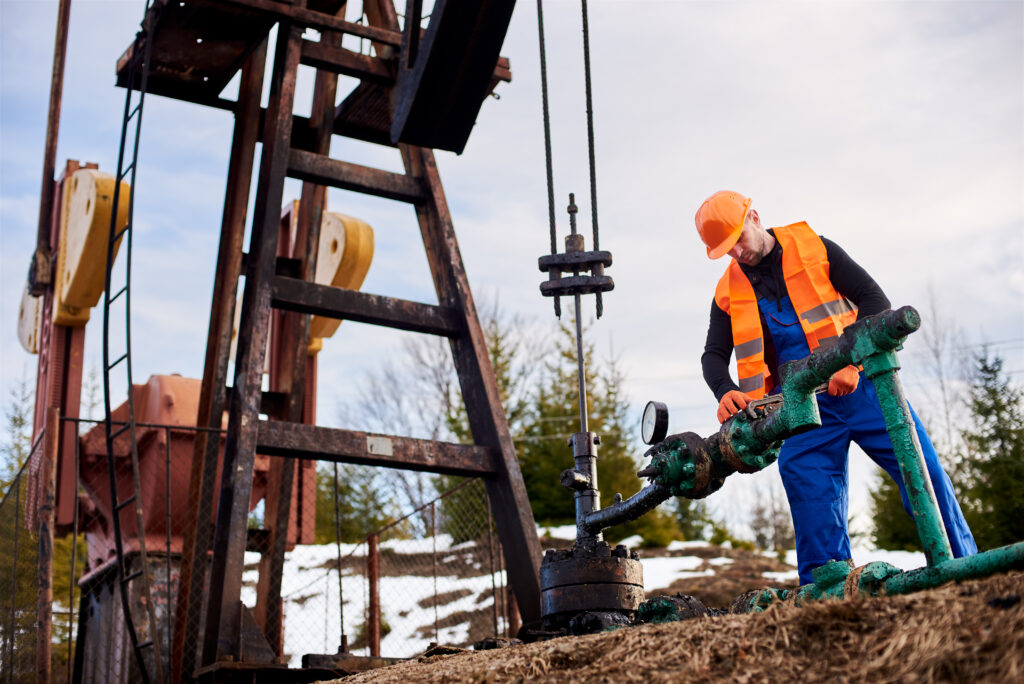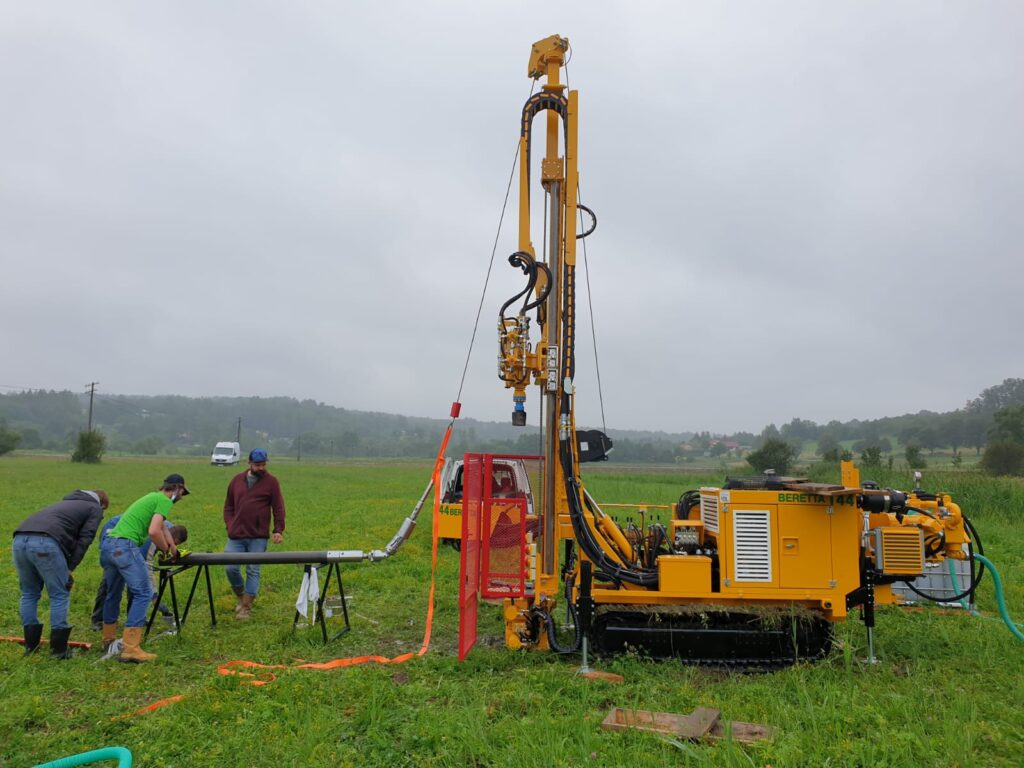What is Drilling?
Drilling is a process of creating a borehole or a well in the ground to access subsurface materials for geological, geotechnical, or environmental investigations. In geotechnical investigation, drilling is used to gather soil and rock samples, as well as to determine the physical properties of the soil or rock layers.
Significance of Drilling in Geotechnical Engineering

Drilling holds immense significance in geotechnical engineering, serving as a fundamental technique for subsurface exploration. Geotechnical engineers heavily rely on drilling to obtain crucial information about the soil and rock formations. By extracting samples from different depths, drilling enables accurate assessment of soil properties, including composition, strength, permeability, and groundwater conditions.
This data is vital for designing foundations, assessing stability, and implementing appropriate mitigation measures. Furthermore, drilling allows for the installation of instrumentation and monitoring devices, facilitating real-time data collection and analysis. With drilling as a key tool, geotechnical engineers can make informed decisions, ensuring the safety, efficiency, and longevity of engineering projects.
How Does it Impact Geotechnical Investigation?
Drilling can impact geotechnical investigation in several ways.
- Firstly, drilling provides access to subsurface materials that would otherwise be inaccessible. This allows for a more comprehensive understanding of the geological and geotechnical conditions of a site.
- Secondly, drilling allows for the collection of soil and rock samples that can be analyzed in a laboratory to determine their physical and mechanical properties. This information is critical in the design of foundations, earthworks, and other structures.
- Thirdly, drilling can be used to measure the in-situ properties of the soil or rock layers. In-situ testing can be done using tools such as piezometers, pressure transducers, or inclinometers, which are inserted into the borehole to measure the properties of the soil or rock layers.
- Finally, drilling can be used to install geotechnical instrumentation such as settlement plates, extensometers, or strain gauges. These instruments can be used to monitor the behavior of the soil or rock layers over time and provide information for the design and safety of structures.
Drilling and Boring Services by AKM Geotechnical
When designing and constructing any structure, it is essential to assess the physical and mechanical properties of soil and rock formations to ensure its stability and safety. Geotechnical investigations play a vital role in understanding the ground conditions and planning and designing safe and efficient structures. Drilling and boring services are integral parts of these investigations, and AKM Geotechnical provides a wide range of these services to their clients. In this blog article, we will discuss the drilling and boring services provided by AKM Geotechnical and their significance in geotechnical investigations.
Our Drilling Services

AKM Geotechnical provides various drilling services, including rotary drilling, sonic drilling, and wireline coring. The selection of drilling method depends on various factors, such as the type of soil and rock formations, the required depth of drilling, and the availability of access to the drilling site.
- Rotary Drilling
Rotary drilling is the most common drilling method used in geotechnical investigations. It involves the use of a rotary drill bit that rotates and cuts the soil and rock formations. The cuttings are then removed from the borehole using a drilling fluid or air. Rotary drilling can be performed using different types of drill bits, such as the tricone bit, PDC (polycrystalline diamond compact) bit, and diamond impregnated bit. AKM Geotechnical has a fleet of rotary drilling rigs that can drill boreholes of various sizes and depths.
- Sonic Drilling
Sonic drilling is a relatively new drilling method that is gaining popularity in geotechnical investigations. It uses high-frequency vibrations to break the soil and rock formations, which are then removed from the borehole using a slurry or compressed air. Sonic drilling produces less cuttings and provides high-quality core samples, making it an ideal method for environmental and geotechnical investigations. AKM Geotechnical has state-of-the-art sonic drilling rigs that can drill boreholes up to 200 feet deep.
- Wireline Coring
Wireline coring is a specialized drilling method used to obtain high-quality core samples of soil and rock formations. It involves the use of a wireline core barrel that is lowered into the borehole and rotated to cut the soil and rock formations. The core samples are then retrieved from the borehole using a wireline system. Wireline coring is a precise and efficient method of obtaining core samples, making it suitable for geological and geotechnical investigations. AKM Geotechnical has experienced personnel and advanced equipment to perform wireline coring accurately and efficiently.
Our Boring Services

AKM Geotechnical provides various boring services, including auger boring, mud rotary boring, and rock coring. The selection of boring method depends on various factors, such as the type of soil and rock formations, the required depth of boring, and the availability of access to the boring site.
- Auger Boring
Auger boring is a simple and efficient method of boring holes in soil and rock formations. It involves the use of an auger bit that rotates and cuts the soil and rock formations. The cuttings are then removed from the hole using the auger flights. Auger boring is suitable for shallow holes and is commonly used for soil sampling and groundwater monitoring. AKM Geotechnical has various types of auger bits and equipment to perform auger boring efficiently.
- Mud Rotary Boring
Mud rotary boring is a common boring method used in geotechnical investigations. It involves the use of a mud rotary drill bit that rotates and cuts the soil and rock formations. The cuttings are then removed from the borehole using a drilling fluid, usually a mixture of water and drilling mud. Mud rotary boring is suitable for drilling deep boreholes in various soil and rock formations. It is also commonly used for environmental investigations, such as soil and groundwater sampling. AKM Geotechnical has advanced mud rotary drilling rigs that can drill boreholes of various sizes and depths.
- Rock Coring
Rock coring is a specialized boring method used to obtain core samples of hard rock formations. It involves the use of a diamond impregnated core bit that is rotated to cut the rock formations. The core samples are then retrieved from the borehole using a wireline system. Rock coring is a precise and efficient method of obtaining core samples, making it suitable for geological and geotechnical investigations. AKM Geotechnical has experienced personnel and advanced equipment to perform rock coring accurately and efficiently.
Significance of Drilling and Boring Services in Geotechnical Investigations

Drilling and boring services are essential components of geotechnical investigations, and their significance can be summarized as follows:
Determining the Physical and Mechanical Properties of Soil and Rock Formations
Drilling and boring services enable geotechnical engineers to obtain core samples of soil and rock formations, which are then tested in the laboratory to determine their physical and mechanical properties. These properties, such as the strength, compressibility, and permeability, are crucial in assessing the stability and safety of structures that are to be constructed on or in the ground.
Identifying Groundwater Conditions
Drilling and boring services enable geotechnical engineers to identify the groundwater conditions in the ground. This information is crucial in designing foundation systems that can withstand the effects of groundwater, such as buoyancy, seepage, and soil liquefaction.
Evaluating the Soil and Rock Strata
Drilling and boring services enable geotechnical engineers to evaluate the soil and rock strata at the site. This information is crucial in determining the soil and rock formations’ bearing capacity, which is essential in designing foundation systems that can safely support the structures’ loads.
Identifying Contamination and Hazards
Drilling and boring services enable geotechnical engineers to identify contamination and hazards in the ground, such as buried debris, chemicals, and hazardous waste. This information is crucial in designing remediation systems that can mitigate the potential risks to human health and the environment.
Conclusion
In conclusion, drilling and boring services are essential components of geotechnical investigations, and AKM Geotechnical provides a wide range of these services to their clients. The selection of drilling and boring methods depends on various factors, such as the type of soil and rock formations, the required depth of drilling or boring, and the availability of access to the site.
These services enable geotechnical engineers to determine the physical and mechanical properties of soil and rock formations. Also to identify groundwater conditions, evaluate the soil and rock strata. With their experienced personnel and advanced equipment, AKM Geotechnical can perform drilling and boring services accurately and efficiently. They ensure the safety and stability of structures that are to be constructed on or in the ground.

